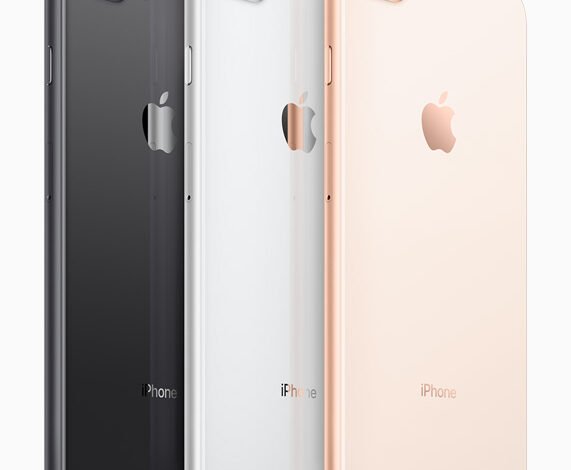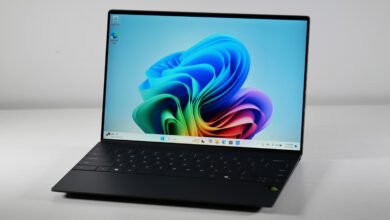iPhone 8 Plus in 2025: Still Worth It or Time to Let Go?

The iPhone 8 Plus may feel like ancient history in a world buzzing about foldable phones and AI-driven cameras, but it still holds a surprising amount of relevance—especially for budget-conscious users, collectors, or those simply after a no-frills, reliable iPhone experience. Launched in 2017, the iPhone 8 Plus marked the end of an era before Apple went all-in on edge-to-edge screens and Face ID.
But here we are in 2025, and people are still buying, using, and talking about the iPhone 8 Plus. So, let’s take a deep dive into what makes this device stick around, where it shines today, and where it might finally fall short in a fast-moving tech world.
Design and Display: Classic, Familiar, and Built to Last
The iPhone 8 Plus is instantly recognizable with its large bezels, circular home button, and sturdy glass-and-aluminum build. In a market now dominated by all-screen phones with curved edges and punch-hole cameras, this device offers a more nostalgic design—and surprisingly, that’s a big part of its charm.
A Design That’s Aged Gracefully
While it’s far from cutting-edge in terms of looks, the 8 Plus still feels solid and premium in hand. The glass back introduced wireless charging to the iPhone for the first time, and the aluminum frame gives it a reassuring weight. Many users actually prefer the physical home button and Touch ID, especially those who never warmed up to Face ID or gestures.
Even though the bezels are large by today’s standards, some users find them more comfortable, especially for landscape viewing. Whether you’re watching YouTube or reading an ebook, the physical separation of screen and edges can reduce accidental touches.
Retina HD Display Holds Up Well
The iPhone 8 Plus features a 5.5-inch Retina HD display with True Tone and wide color (P3) support. It’s not OLED, and it doesn’t have high refresh rates like modern iPhones, but it’s still a bright, color-accurate, and reliable LCD panel. Text looks crisp, colors are vibrant, and brightness holds up decently in outdoor conditions.
True Tone adjusts the screen based on ambient lighting, which makes viewing more comfortable on the eyes. And for everyday tasks like social media, email, and web browsing, it delivers just fine—even eight years after launch.
Durability Over Time
One thing often overlooked about older iPhones is how durable they can be. Thanks to its chunky bezels and tough materials, the iPhone 8 Plus is less prone to shattering than some of its newer counterparts. Many users have kept theirs without a cracked screen for years, which is a testament to Apple’s build quality.
Performance and Software: Still Kicking with A11 Bionic
The iPhone 8 Plus was the first to come with Apple’s A11 Bionic chip, which introduced the concept of a neural engine for machine learning tasks. While newer iPhones are now running on A17 or even A18 chips, the A11 still packs enough punch for most day-to-day activities.
A11 Bionic: Surprisingly Capable
Despite being almost a decade old, the A11 Bionic chip still handles iOS functions smoothly. You can run most apps, multitask, and even do some light gaming without serious lag. Sure, it won’t match the fluidity or processing power of newer devices, but for casual users, it’s more than adequate.
The chip also supports some light machine learning, so features like intelligent photo categorization, Siri suggestions, and background app optimization still function well. For a phone that came out in 2017, that’s pretty impressive.
iOS Updates: How Long Will It Last?
As of 2025, Apple has stopped pushing major iOS updates to the iPhone 8 Plus, with the last official version being iOS 16. That said, security updates may still continue for a while, and apps remain compatible for now. But the writing is on the wall: the iPhone 8 Plus won’t be getting iOS 18 or beyond.
This means that while you can still use the device securely, you won’t benefit from the latest features like AI photo editing, improved widgets, or privacy enhancements Apple keeps adding. Eventually, app compatibility will begin to degrade too.
Real-World Usage
In real-world use, the phone still performs admirably. You can stream Netflix, run Instagram, send emails, and even play Call of Duty Mobile—just don’t expect lightning speed. For grandparents, young kids, or anyone who doesn’t need the latest and greatest, the 8 Plus is still a smart and economical choice.
Camera: Not Revolutionary, But Definitely Respectable
When the iPhone 8 Plus launched, its dual-camera system was a big deal. It was one of the first iPhones to offer Portrait Mode, and its telephoto lens brought better zoom capabilities to the iPhone lineup.
Dual-Lens System with Portrait Mode
The phone features a 12MP wide and 12MP telephoto lens setup, which allows for 2x optical zoom and up to 10x digital. Portrait Mode uses both lenses to create a depth-of-field effect, simulating a DSLR-like bokeh. Even today, the results hold up pretty well, especially in good lighting.
It’s not as smart as the computational photography we see now, but it still delivers solid shots. Plus, for people who aren’t pixel-peeping or printing billboards, it’s more than enough.
Video Recording is Surprisingly Good
The iPhone 8 Plus can record 4K video at 60fps, a feature that still puts it ahead of many budget Android phones even in 2025. The footage is smooth, detailed, and decently stabilized. Audio capture is solid too, making this phone a still-viable tool for vlogging or casual content creation.
The only major drawback is low-light performance, where the camera shows its age. Night photography has come a long way, and the 8 Plus struggles in dim settings compared to today’s night mode-capable cameras.
Front Camera: Pretty Basic by Today’s Standards
The 7MP front-facing camera was perfectly fine back in 2017, but now it feels dated. It lacks the depth sensor and higher resolution that recent iPhones offer. For basic selfies and FaceTime, it’s serviceable, but don’t expect mind-blowing results.
Battery Life and Charging: Gets the Job Done
Battery performance is often the Achilles’ heel of older smartphones. The iPhone 8 Plus originally shipped with a 2,691mAh battery, and while that’s modest by today’s standards, it was enough to power the efficient A11 chip through a full day.
Decent Battery… with a Catch
When new, the 8 Plus could easily last a full day with moderate use. But by now, most units will show some degree of battery wear. If your battery health is below 80%, you’ll probably notice faster drains, especially when multitasking or using GPS.
Luckily, Apple still supports battery replacements for this model, and swapping it out can significantly improve performance.
Wireless Charging and Fast Charging
The iPhone 8 Plus was the first iPhone to support Qi wireless charging, a feature still used in current iPhones. It also supports fast charging up to 50% in 30 minutes, but you’ll need to use a USB-C to Lightning cable and a compatible adapter—not included in the original box.
These features help bring the device closer to modern standards, even if they’re not as fast or efficient as today’s 30W+ chargers.
Who Should Still Buy the iPhone 8 Plus?
With all that said, you might be wondering: who is the iPhone 8 Plus still good for in 2025? And the answer is—more people than you might think.
Great for Budget-Conscious Users
If you need an iPhone for basic tasks—calls, messaging, email, browsing—the iPhone 8 Plus is still a great pick. You can find it used or refurbished for a fraction of the cost of newer models. And unlike many budget Android phones, it offers a premium build, wireless charging, and a familiar iOS ecosystem.
Ideal as a Backup or Secondary Device
Many users keep their older iPhones as a secondary phone—for travel, as a work-only device, or even just to use as a music player. The 8 Plus is perfect for this role. It’s reliable, easy to use, and still compatible with most apps and accessories.
Not Recommended for Power Users
If you’re into mobile gaming, photography, or productivity on the go, the iPhone 8 Plus might not cut it anymore. Its aging hardware, lack of new iOS support, and limited camera capabilities mean it’s no longer a flagship experience.
Final Verdict: A Classic iPhone That Still Has Value
The iPhone 8 Plus may not be the flashiest phone around, but it’s certainly not obsolete either. With a classic design, decent performance, and a feature set that covers the basics (and then some), it remains a viable option in 2025 for many users.
Whether you’re holding onto one, considering buying a refurbished unit, or just curious how long iPhones truly last, the iPhone 8 Plus stands as a testament to Apple’s long-term reliability. If you’re not chasing the latest and greatest, this device still has a few solid years left in it—especially with a fresh battery and some smart app choices.



